Relationship Selling: Definition, Best Practices, Examples
Casey O'Connor
Contents
- What Is Relationship Selling?
- The Stages of Relationship Selling: A Step-by-Step Framework
- Benefits of Relationship Selling
- How to Build Relationships in Sales
- Relationship Selling Best Practices
- Examples of Relationship Selling
- Challenges in Relationship Selling
- Measuring Success: Key KPIs for Relationship Selling
- How Technology Empowers Relationship Selling: High-Touch at Scale
- Conclusion
- Frequently Asked Questions About Relationship Selling
Relationship selling is a sales approach that — no surprises here — prioritizes a trusting, mutually beneficial relationship between buyer and seller. A strong relationship is so foundational to this sales approach that it’s, in fact, a higher priority than the sale itself.
The truth is, B2B sales have always been somewhat less transactional than B2C. There are more opportunities for natural relationship-building in the B2B sales process, and most B2B buyers are wary of being sold to; most B2B sales reps have to make an effort to personalize the process.
That being said, the tenuous global landscape (including uncertain economic forecasts) has made relationship selling more relevant than ever. Many organizations are trimming their budgets, and even highly profitable companies are more likely to be risk-averse in times like these; a trusting relationship with a credible seller is crucial for creating the right conditions for prospects to move forward.
The overarching goals of relationship selling are to ensure the buyer feels seen, heard, and understood, and to offer consistent, personalized value based on their pain points and needs. A closed-won deal is also great, but should never take precedence over a trusting, value-driven relationship.
In this article, we’ll go over everything today’s B2B sales rep needs to know about this sales approach, including specific relationship selling strategies that will help build trust with and provide value to prospects.
Here’s what we’ll cover:
- What Is Relationship Selling?
- The Stages of Relationship Selling: A Step-by-Step Framework
- Benefits of Relationship Selling
- How to Build Relationships in Sales
- Relationship Selling Best Practices
- Examples of Relationship Selling
- Challenges in Relationship Selling
- Measuring Success: Key KPIs for Relationship Selling
- How Technology Empowers Relationship Selling: High-Touch at Scale
- FAQs
What Is Relationship Selling?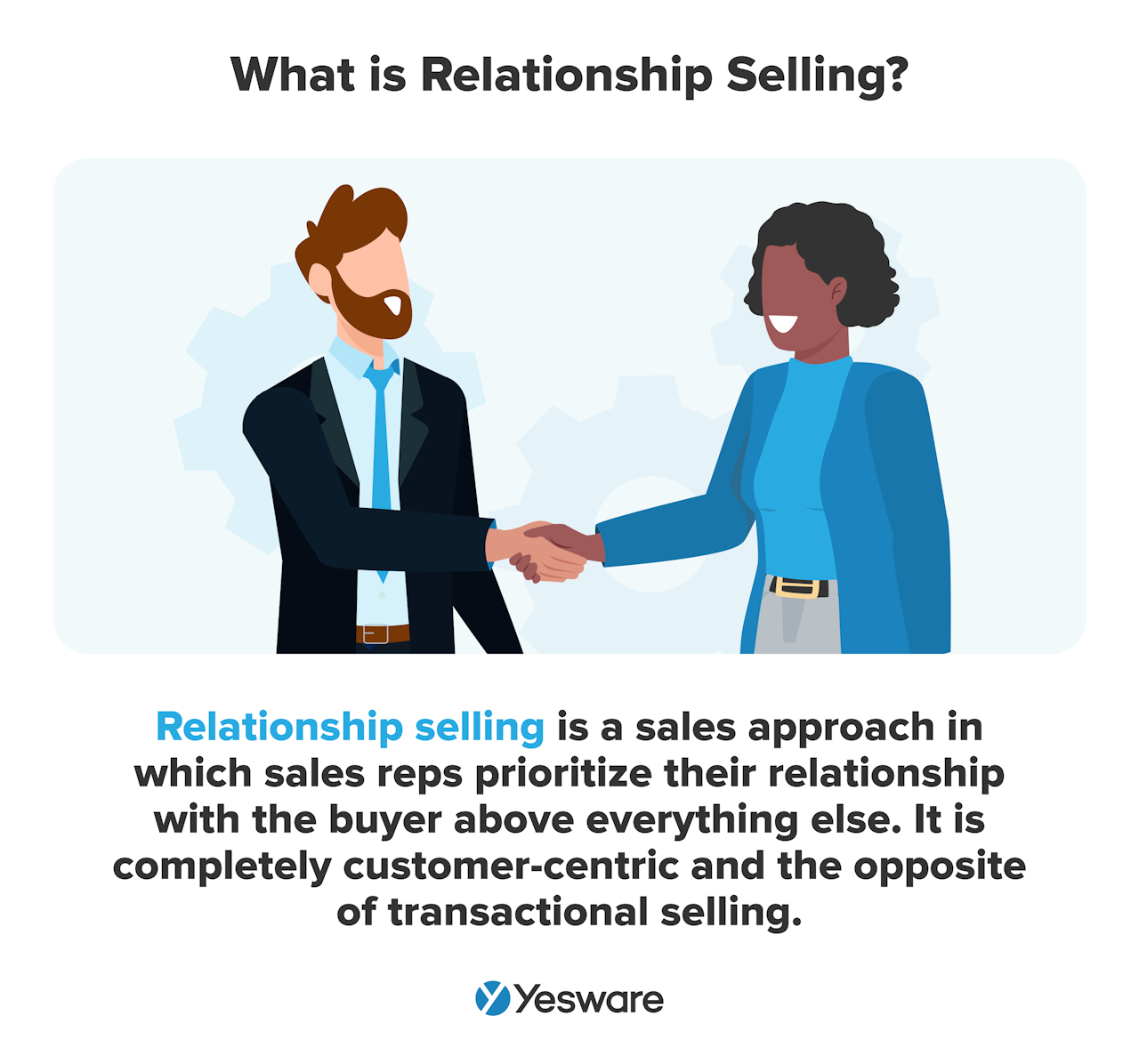
Relationship selling is a sales approach where the core focus shifts from simply closing a deal to building a deep, trusting, and mutually beneficial relationship with the buyer. It’s fundamentally customer-centric, prioritizing the long-term success and needs of the client over any single transaction.
This approach stands in direct contrast to transactional selling, which is characterized by its emphasis on the immediate, one-time sale. In transactional selling, the focus is on the product, price, and efficiency of the exchange, often for lower-value, less complex items with short sales cycles.
As a sales technique, relationship selling is all about building trust with prospects. Sales reps who succeed in this approach know how to present themselves as highly and authentically credible and focus on adding value to every sales interaction.
Relationship selling can work well for many B2B industries but is particularly effective for those with long sales cycles, high-value deals, repeat business providers (e.g., insurance), and others with complex or custom solution requirements.
This is a sales approach that requires quite a bit of legwork, persistence, and consistent positivity — not to mention a knack for getting along with just about anyone. With nearly 70% of B2B buyers reporting that they abandon a brand if they don’t feel cared for, it’s more important than ever that sales reps learn the strategies, techniques, and best practices that are most effective for this sales approach.
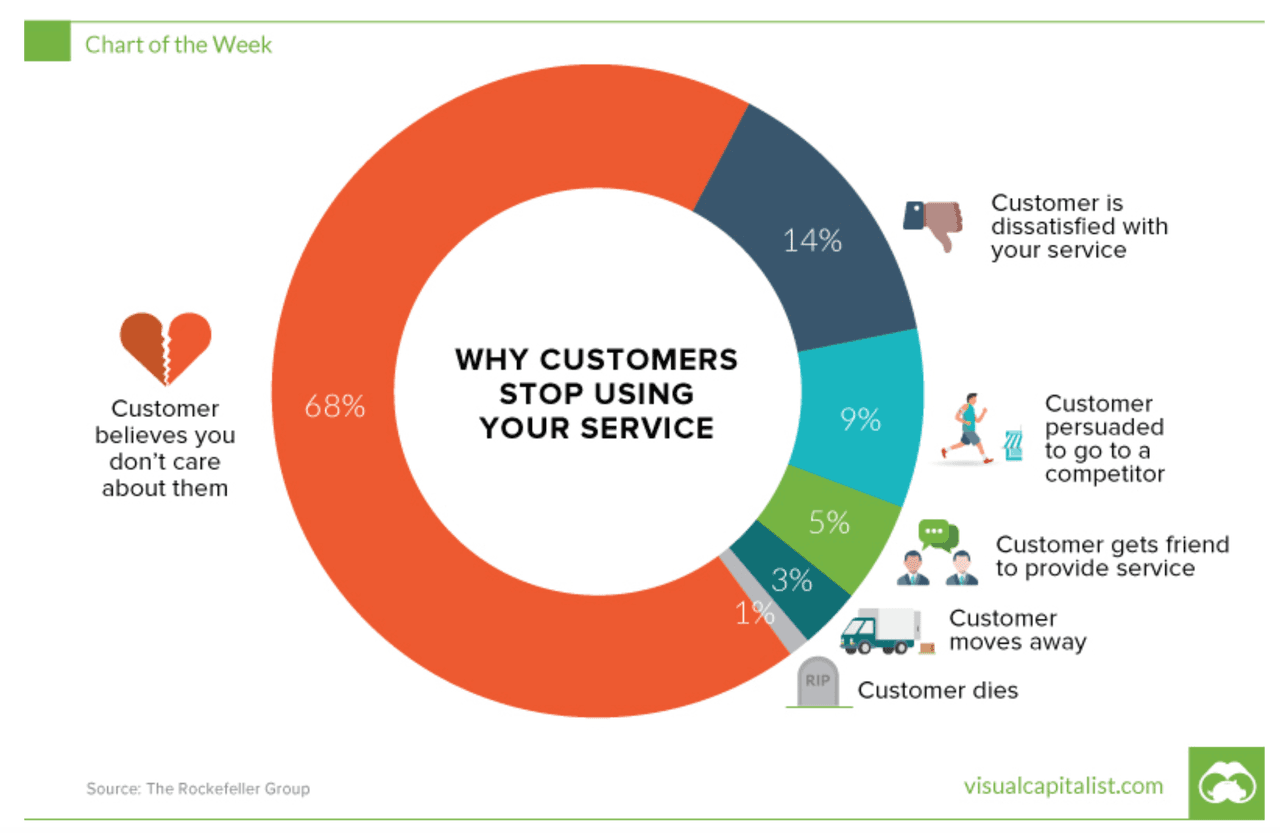
Relationship selling is the embodiment of the phrase, “This is a marathon, not a sprint.” But the more time, positive sales mindset, and authentic energy a sales rep puts into making a real human connection with each of their prospects, the more fruitful each relationship will become.

The Stages of Relationship Selling: A Step-by-Step Framework
Relationship selling isn’t a nebulous concept; it’s a deliberate, structured process that unfolds in distinct stages, each building upon the last to forge a robust, lasting connection. By understanding and diligently following these steps, sales professionals can systematically cultivate trust, deliver exceptional value, and transform prospects into loyal, long-term partners.
1. Discovery & Understanding (Awareness)
This foundational stage is all about genuinely understanding your prospect, far beyond just their surface-level interest. It’s where you become a detective, uncovering the true landscape of their situation.
- What happens: Sales professionals engage in deep listening, asking powerful, open-ended questions designed to unearth the prospect’s explicit and implicit needs, challenges, pain points, strategic goals, and even personal aspirations related to their business. This involves extensive research before and during initial conversations.
- Key activities: Active listening, insightful questioning, industry research, competitive analysis, understanding their buying process, and key stakeholders and shareholders.
- Goal for the stage: To gain a comprehensive and empathetic understanding of the prospect’s world, positioning yourself as a knowledgeable resource rather than just a vendor.
2. Building Rapport & Trust (Acquisition)
With a solid understanding of their needs, this stage focuses on establishing a genuine human connection and building credibility. Trust is the currency of relationship selling.
- What happens: Salespeople focus on finding common ground, demonstrating empathy, sharing relevant insights without immediately pushing a product, and consistently following through on small promises. This builds the foundation for an honest and open dialogue.

- Key activities: Active listening (again, for personal cues), sharing relevant case studies, providing valuable content, consistent and reliable communication, and being punctual and prepared.
- Goal for the stage: To establish yourself as a credible, trustworthy, and helpful advisor whom the prospect feels comfortable engaging with and confiding in.
3. Value Alignment & Solutioning (Alignment)
Once trust is established and needs are clear, this is where you connect the dots between your offering and their specific challenges, demonstrating tangible value.
- What happens: The salesperson crafts and presents solutions tailored precisely to the prospect’s identified needs and goals. This involves illustrating how your product or service directly addresses their pain points, helps them achieve their objectives, and provides a clear return on investment (ROI). It’s less about features and more about outcomes.
- Key activities: Customizing sales presentations, demonstrating specific capabilities, crafting compelling value propositions, addressing potential concerns proactively, and involving relevant internal experts.

- Goal for the stage: For the prospect to clearly see and agree upon how your solution directly aligns with their unique needs and provides significant, measurable value.
4. Commitment & Close (Action)
This stage involves guiding the prospect towards a decision, but through a collaborative, trusting dialogue rather than aggressive pressure.
- What happens: The salesperson works with the prospect to overcome any remaining objections, clarify terms, and finalize the decision. This is not a moment for ambush, but rather a natural progression stemming from mutual understanding and shared objectives. All concerns are addressed through a trusting dialogue, ensuring the prospect feels confident in their choice.
- Key activities: Reaffirming value, patiently addressing final questions, clarifying next steps, guiding through purchasing processes, confirming commitments.
- Goal for the stage: To secure a mutually beneficial agreement, ensuring the prospect feels empowered and positive about their decision.
5. Post-Sale Nurturing & Expansion (Aftercare)
The relationship doesn’t end with the sale; it truly begins. This ongoing stage reinforces the “long game” aspect of relationship selling, driving loyalty and future opportunities.
- What happens: The salesperson ensures a smooth onboarding and implementation process, provides ongoing support, proactively checks in to ensure customer success, and continues to be a resource. Over time, this leads to opportunities for upsells, cross-sells, and invaluable referrals.
- Key activities: Facilitating hand-offs to support teams, proactive check-ins for satisfaction, sharing new relevant insights, identifying new needs, requesting testimonials and referrals when appropriate.
- Goal for the stage: To cultivate a loyal customer who becomes an advocate for your brand, leading to repeat business, increased Customer Lifetime Value (CLTV), and a steady stream of high-quality referrals.
Benefits of Relationship Selling
Effective relationship selling leads to increased customer loyalty, improved customer lifetime value (LTV), more referrals, and lucrative cross-sells and upsells.
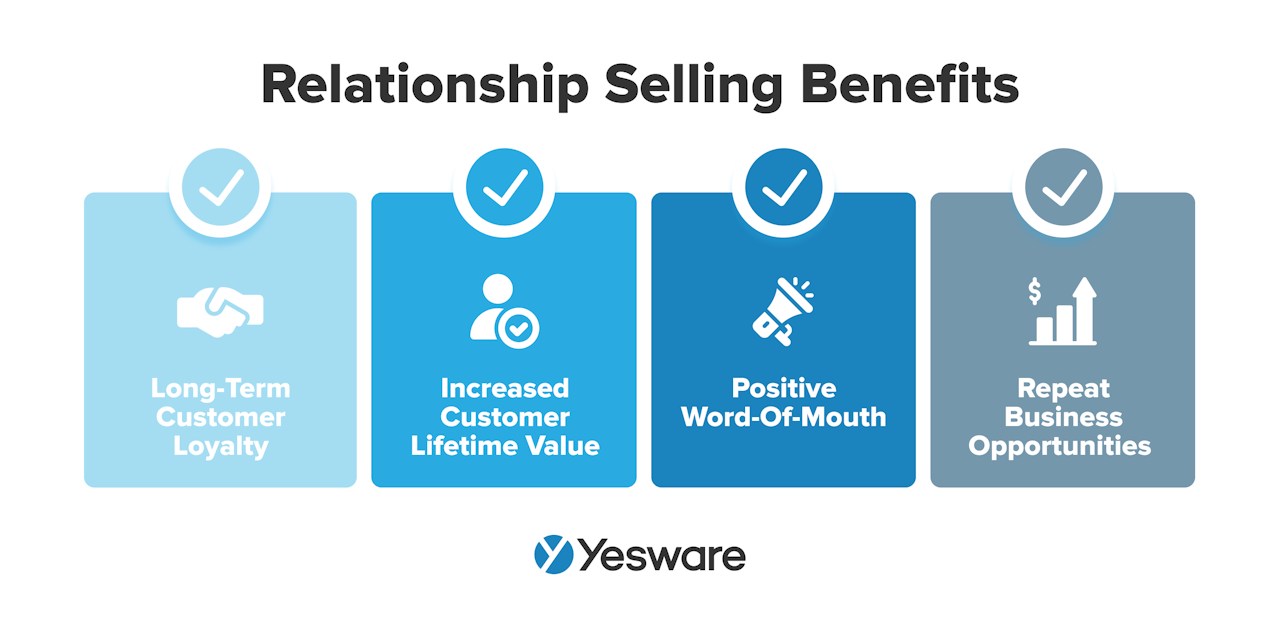
Long-Term Customer Loyalty
The relationship selling approach helps build lasting, meaningful, trusting relationships with buyers. These kinds of relationships lead to strong loyalty among your customer base.
The drive to be loyal to relationship-focused brands comes from how well relationship sellers can personalize the buying experience. Consumers are much more likely to be loyal to brands that create an individualized experience — and the benefits of that loyalty reach far beyond the effort it takes to generate it.
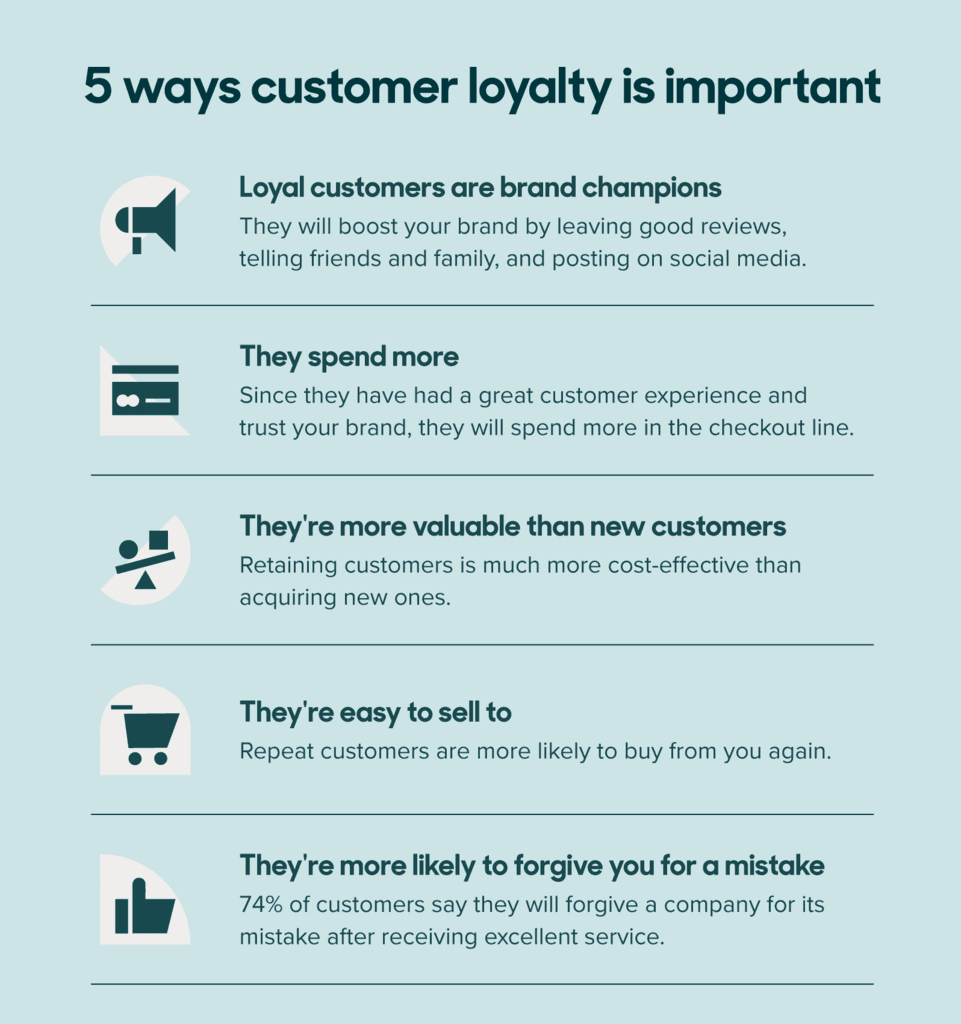
Loyal accounts are long-term accounts, and relationship sellers should take care to ensure the trusting bond is maintained over time (we’ll cover post-sale communication later in this article).
Increased Customer Lifetime Value
Relationship selling can lead to a significant increase in the customer lifetime value of your organization. 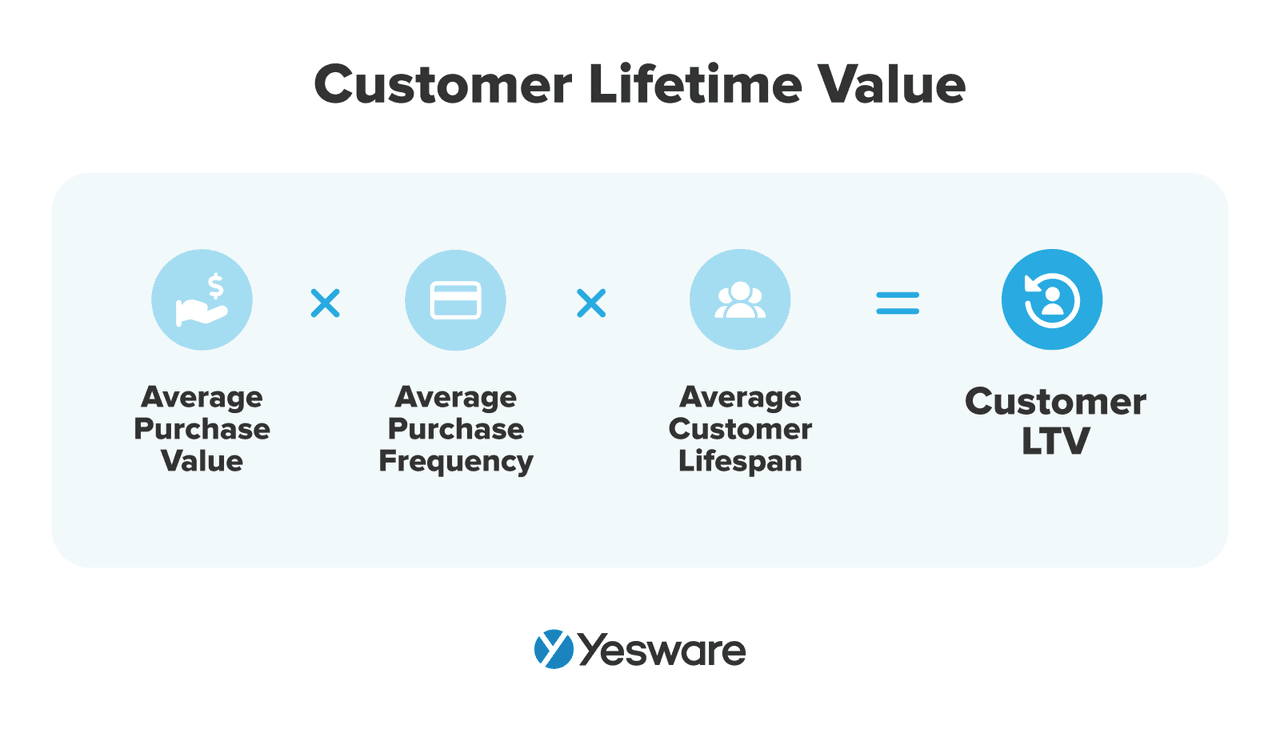 Again — the stronger the relationship between buyer and seller, the more revenue they’ll generate for your organization over the course of their contract with you.
Again — the stronger the relationship between buyer and seller, the more revenue they’ll generate for your organization over the course of their contract with you.
It’s also worth mentioning that many high-value accounts require rather significant attention to detail and personalization. When those challenging conditions can be met, however, these types of clients can be incredibly lucrative and profitable. Great relationship sellers know how to navigate these clients with tact so that their needs are met and they continue to sign contracts well into the future.
Positive Word-Of-Mouth
Relationship selling creates lots of natural opportunities for positive word-of-mouth and, even better, referrals from satisfied customers.
In fact, sales referrals generated from successful relationship-based sales are like gold for B2B sales teams.
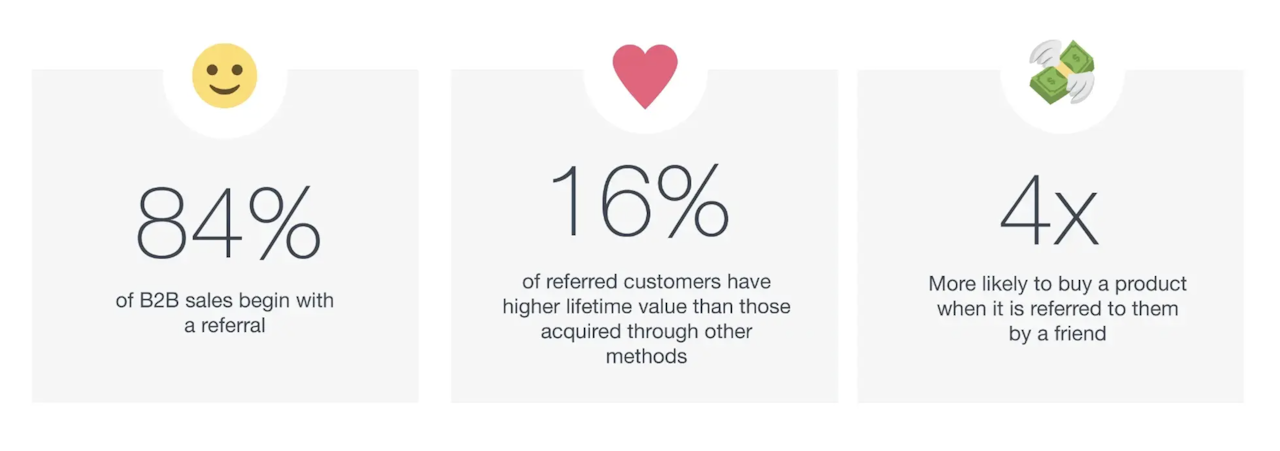
Even aside from direct referrals, a satisfied customer base can create quite the buzz around your product and improve your overall brand reputation in the industry.
Repeat Business Opportunities
Relationship selling also opens up many opportunities for cross-selling and upselling. 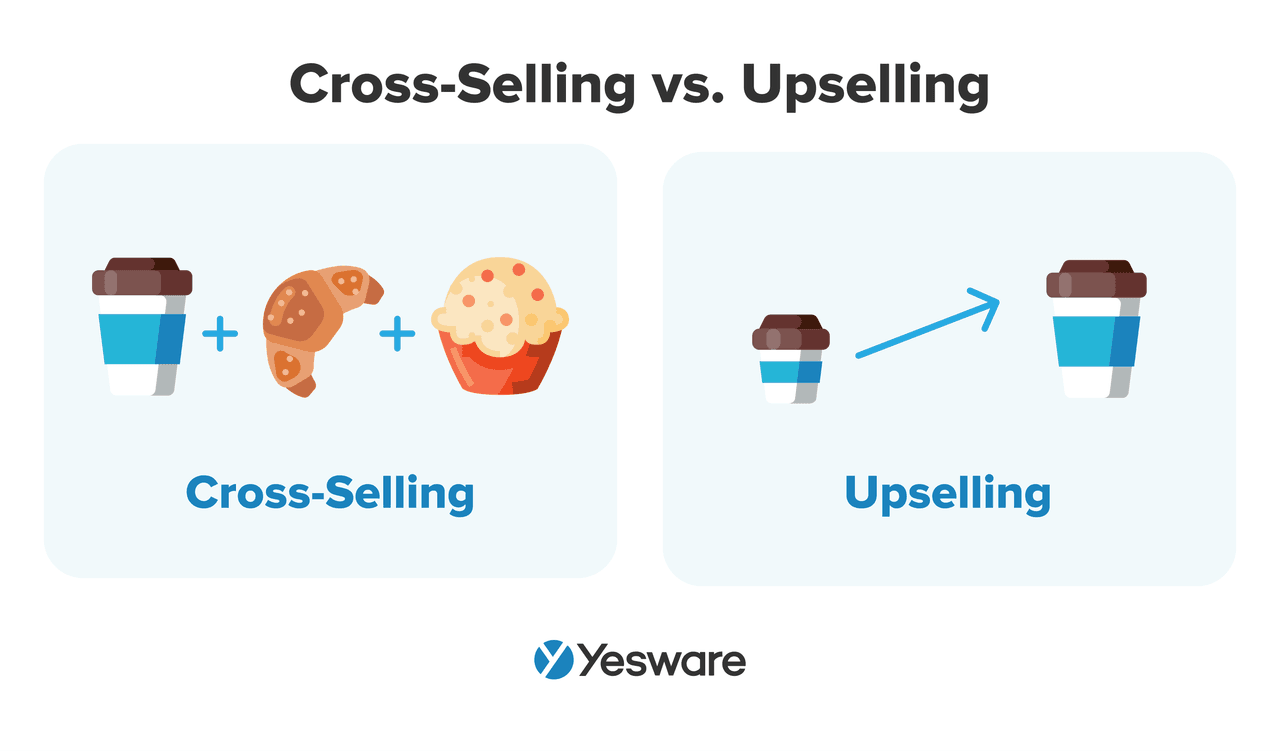 And while many sales reps love the thrill of finding new buyers every day, relationship sellers know that existing customers can be just as financially intriguing.
And while many sales reps love the thrill of finding new buyers every day, relationship sellers know that existing customers can be just as financially intriguing.
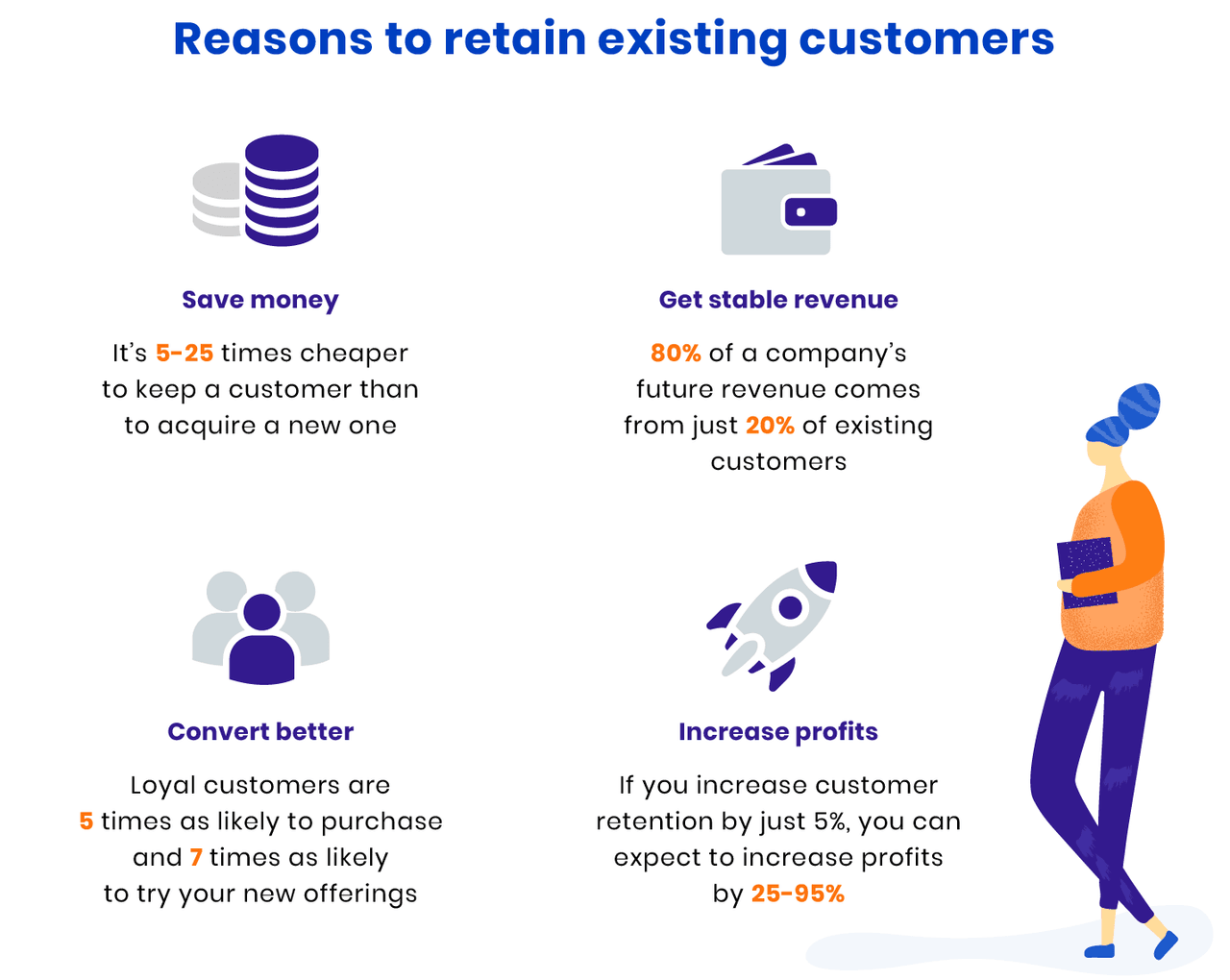
Relationship selling also gives sales teams better insight into the shared characteristics of their customer base, as buyers are much more likely to give honest feedback and insight to sellers that they trust.
How to Build Relationships in Sales
It’s worth mentioning that mastering relationship selling requires patience, commitment, and a genuine curiosity about people (especially those in your target market). Great relationship sellers are also very skilled at interpreting nuance and “reading the room.”
There are four main areas for sales reps to keep in mind as they learn how to build relationships in sales: active listening, understanding customer needs, building trust, and providing value.
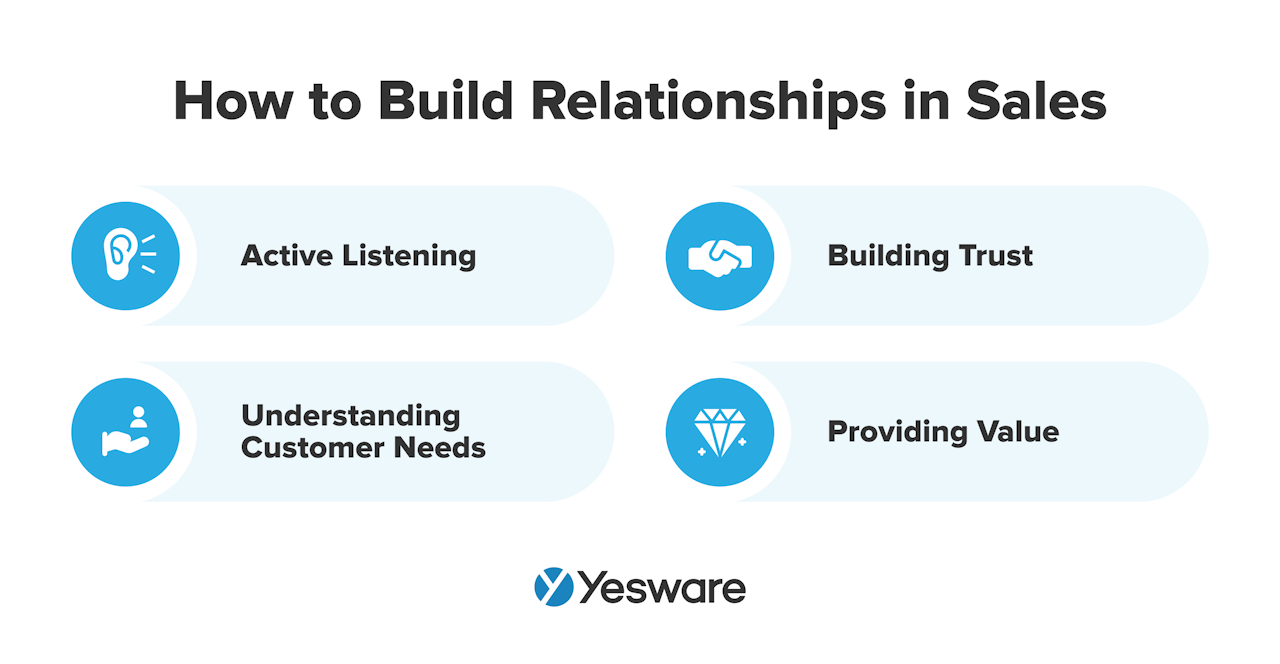
1. Active Listening
Listening is the cornerstone of relationship selling; studies show that top-performing sales reps talk the least and listen the most relative to their peers.
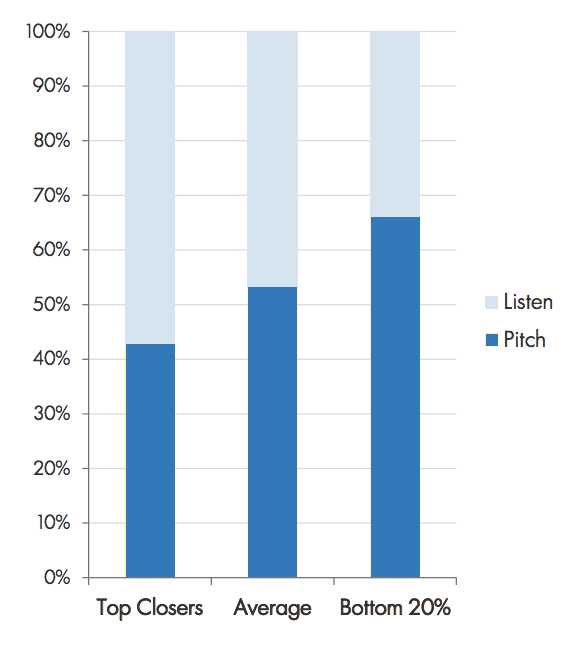
Active listening, though, is the way highly skilled relationship sellers listen to truly understand their prospects’ deepest needs, pain points, challenges, motivations, and goals.
Take a look at the best active listening skills for sales conversations:  As you listen, tune into what they’re speaking about when they’re most animated or passionate. Show genuine interest and curiosity in what they really want you to understand.
As you listen, tune into what they’re speaking about when they’re most animated or passionate. Show genuine interest and curiosity in what they really want you to understand.
It’s also important that everyone in the room has an opportunity to share their opinion. With the average B2B sales deal involving 6 – 10 decision-makers, sales reps can show interest and thoroughness by encouraging everyone’s opinions to be presented as they learn about one another.
Go beyond simply hearing words; active listening is about fully concentrating on, understanding, responding to, and remembering what the other person is communicating. In sales, it’s about discerning not just the stated needs, but the underlying motivations, unspoken concerns, and emotional drivers behind a prospect’s words.
How to Implement:
- Paraphrase and Summarize: After a prospect speaks, rephrase what you’ve heard in your own words (“So, if I understand correctly, your biggest challenge is X because of Y?”). This validates their message, confirms your understanding, and gives them an opportunity to correct or elaborate.
- Ask Open-Ended Questions: Move beyond “yes/no” questions. Use prompts like “What does success look like for you in this scenario?”, “Can you tell me more about the impact that problem is having?”, or “What are your ultimate desired outcomes from a solution like this?” These questions encourage the prospect to share deeper insights into their challenges and individual motives.
- Listen for Desired Outcomes and Individual Motives: Pay attention to not just the “what” (the problem) but the “why” (the personal or business impact). For example, a prospect might say they need “faster software” (what), but active listening reveals they’re actually motivated by “reducing employee frustration and improving team morale” (why/motive) or “freeing up time for strategic projects” (desired outcome).
- Minimize Interruptions: Allow for silences and resist the urge to jump in with solutions or rebuttals. Let the prospect fully express themselves.
- Observe Non-Verbal Cues: Pay attention to tone of voice, pacing, and (in video calls) body language. These can provide additional layers of understanding about their comfort level, urgency, or emotional state.
Example:
- Prospect: “Our current project management system is just clunky. My team spends too much time on manual updates, and deadlines are always shifting.”
- Sales Rep (Active Listening): “I hear you, ‘clunky’ systems can definitely be a time sink. So, if I’m understanding correctly, the manual updates are not only eating into your team’s productive hours, but the shifting deadlines are causing stress and perhaps impacting client trust. What would it mean for your team and for you personally if you could eliminate those manual tasks and consistently hit every deadline?” (This response paraphrases, validates, and uses an open-ended question to uncover deeper motivations and desired outcomes.)
2. Understanding Customer Needs
Relationship selling is based on sellers having a thorough and personal understanding of each of their prospects.
One of the reasons behind building such a strong relationship with each prospect is that this bond encourages prospects to open up about their most pressing needs.
Through the course of building rapport and establishing a baseline relationship, you can begin to qualify the customer and learn more about their unique needs. What’s their ultimate goal? What does their ideal outcome look like? What are their buying criteria? What’s motivating the prospect, as an individual, to pursue this relationship with the sales rep?
Of course, relationship selling requires that the sales rep doesn’t just read these questions off of a list. A framework like BANT (Budget, Authority, Need, Timeline) can help guide your qualification process, but these insights should come via authentic, naturally flowing conversation. Don’t force the sale if you realize their needs don’t align with your solution.

Sales and marketing teams can collaborate to create an ideal customer profile (sales ICP) based on the shared characteristics of your most successful customers. 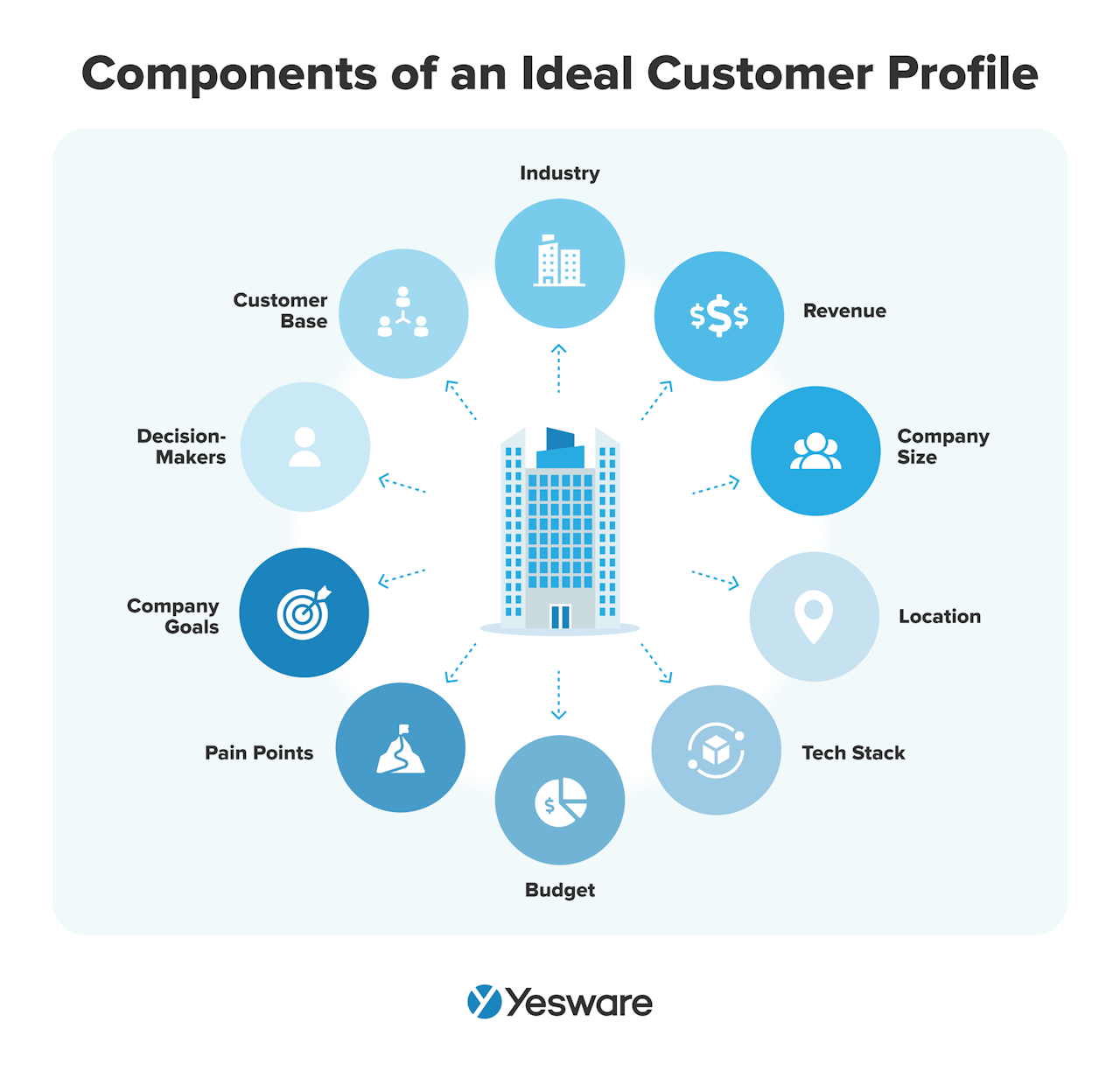 While the conversation with each prospect is where sales reps will ultimately learn the most about the prospects’ individual requirements, the ICP can help reps have a preliminary idea of what a buyer may want or need.
While the conversation with each prospect is where sales reps will ultimately learn the most about the prospects’ individual requirements, the ICP can help reps have a preliminary idea of what a buyer may want or need.
The benefit of understanding customer needs on such a deep and personal level is that it allows sales reps to personalize the solutions they offer.
Example:
A B2B software rep selling project management tools starts building rapport with a prospect who recently took over as head of operations. During informal conversations, the rep learns that the prospect’s primary challenge is improving team productivity without increasing headcount.
The rep asks thoughtful questions—not just about technical features, but about the prospect’s team dynamics and workflow bottlenecks. This reveals a key pain point: cross-departmental communication is slow and fragmented.
Instead of launching into a generic demo, the rep customizes the conversation around specific collaboration tools in the software that reduce update lag and improve visibility. The prospect not only feels heard but also begins to see the product as a strategic solution to their specific problem, not just another platform.
The benefit of understanding customer needs on such a deep and personal level is that it allows sales reps to offer highly tailored solutions. This not only builds trust, but also dramatically increases the chances of closing the deal.
3. Building Trust
It’s important to note that relationship selling is about much more than small talk and building rapport. Sales reps need to also establish true credibility and trustworthiness through the course of conversation.
In order for prospects to trust you, they need to believe that you have their best interests in mind and that you have the expertise to help them. This requires patience, careful listening, and a willingness to be honest about how to best meet the customer’s needs. Never mislead the prospect or withhold details for the sake of moving the deal along.
In fact, a relationship seller would be considered more successful for pointing a prospect in another direction than for closing a poor-fit deal.
Another way to bolster trust is to be exceptionally mindful of boundaries. This can become a bit muddled in relationship selling, as the entire premise is based on building strong personal bonds with professional peers. That can get quite nuanced, as sales reps need to be careful about legal boundaries, company boundaries, and personal boundaries.
That being said, keep in mind that a majority of communication is non-verbal. 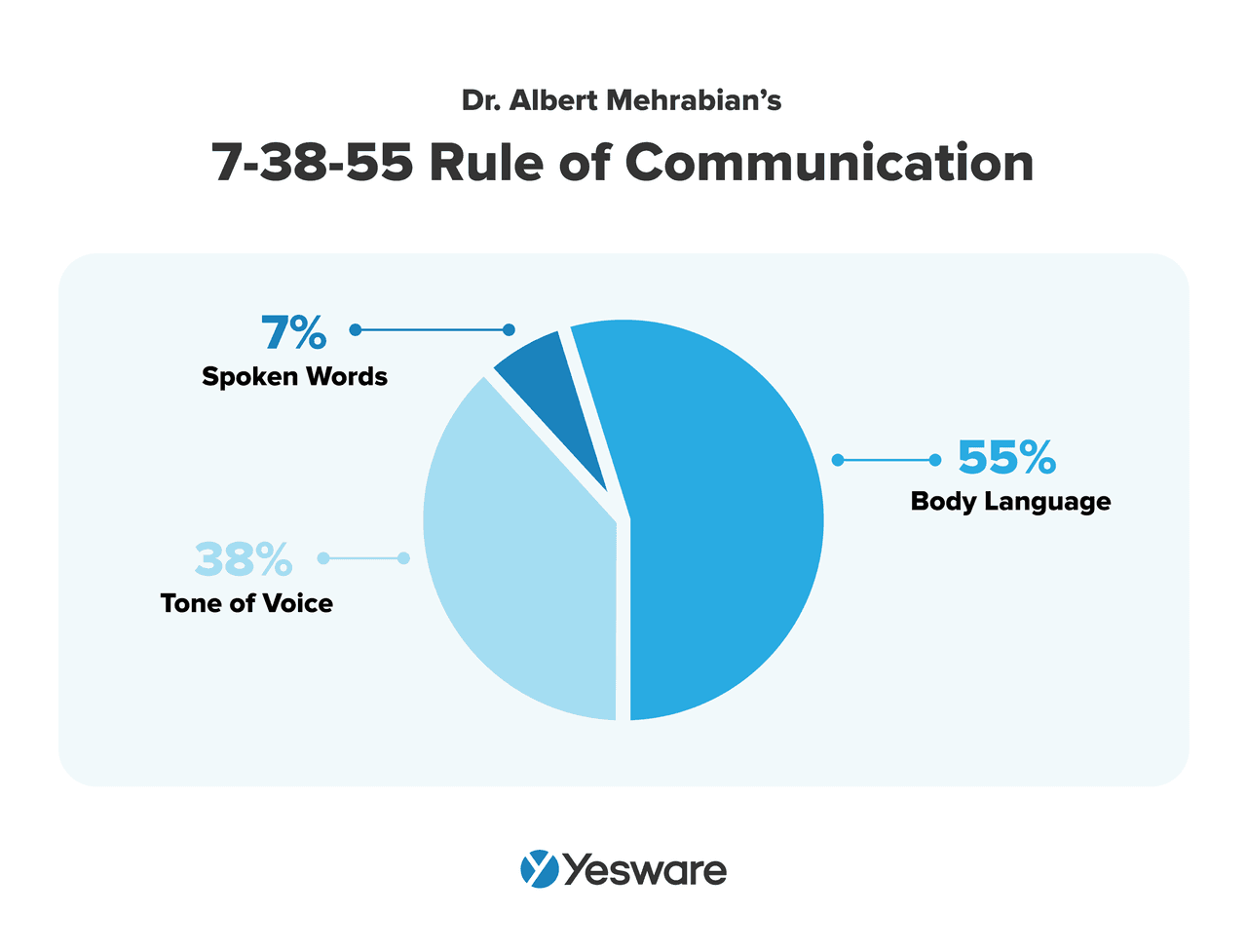 Pay attention to your prospect’s body language to get a sense of how trusting they feel toward you throughout sales conversations.
Pay attention to your prospect’s body language to get a sense of how trusting they feel toward you throughout sales conversations.
How to Implement:
- Radical Honesty and Transparency: Never mislead a prospect or withhold details to push a deal forward. If your solution isn’t the best fit, be honest about it, even if it means recommending an alternative or walking away from the sale. A relationship seller prioritizes guiding a prospect to the right solution, even if it’s not theirs.
- Deliver on Promises: Follow through on every commitment, big or small. If you say you’ll send an email by Tuesday, send it by Tuesday. If you promise a demo will cover specific features, ensure it does. Consistency in reliability builds immense trust over time.
- Prioritize Their Needs: Show that you truly have their best interests at heart. This means being patient, carefully listening (as discussed above), and being willing to have difficult conversations if your solution isn’t a perfect fit.
Example: A sales rep is working with a prospect who is evaluating their software. Through active listening, the rep uncovers a very niche requirement that their platform currently doesn’t fully support. Instead of glossing over it or making vague promises, the rep says: “Based on our conversation, I understand [Niche Requirement] is critical for you. While our platform handles 90% of your needs exceptionally well, that specific function isn’t something we currently offer out-of-the-box. We do have a workaround that many clients use, and I can also recommend [Competitor’s Product X], which specializes in that exact niche, though it might lack in other areas where we excel. My goal is for you to have the best solution, even if it’s not ours.”
This honesty, transparency, and willingness to potentially walk away for the prospect’s benefit builds immense trust and credibility, often leading to referrals or future opportunities.
4. Providing Value
In relationship selling, every sales interaction should include the sales rep providing value to the prospect.

How to Implement:
- Deep Industry Knowledge: Invest time in understanding their industry trends, regulations, common pain points, key competitors, and emerging opportunities. This allows you to speak their language and anticipate their needs.
- Proactive Value Sharing: Don’t wait for a direct question. Share relevant articles, whitepapers, market research, or insights into solutions that have worked for similar companies, even if they don’t directly mention your product. This positions you as a helpful advisor.
- Problem-Solving Ideas: Offer general strategies or frameworks that could help them address their challenges, drawing on your broad expertise rather than immediately pitching a specific feature.
- Connect Them to Resources: If you know someone or something that could genuinely help them, make an introduction or recommendation, even if it doesn’t directly benefit you.
Example:
- Instead of: “Our CRM has excellent reporting features.”
- Try: “I noticed a recent article from [Industry Publication] discussing how companies in the [Prospect’s Industry] sector are struggling with data silos leading to inefficient reporting. We’ve seen similar challenges, and one strategy [Another Company] used was to centralize their data analytics before even looking at new software solutions. Here’s a brief breakdown of their approach, which might give you some ideas. If you’re tackling something similar, our solution offers specific ways to streamline that process…” (This shows knowledge of their industry problem and offers value before pitching.)
Tip: Improve your sales conversations with proven psychology strategies to persuade and connect with buyers.
 Psychology Principles + 13 Power Words for Winning SalesData-backed psychological principles, nonverbal cues, and persuasive phrases to win more deals.
Psychology Principles + 13 Power Words for Winning SalesData-backed psychological principles, nonverbal cues, and persuasive phrases to win more deals.
5. Leveraging Social Media
Social media platforms—particularly LinkedIn—offer powerful opportunities for sales professionals to connect with prospects in a more personal and value-driven way. Relationship selling is rooted in trust and familiarity, and social media provides a natural setting to initiate and nurture that connection over time.
Here are specific sales strategies for effective social selling:
-
Engage Thoughtfully With Their Content.
Start by following your prospects and regularly engaging with their posts. Like their updates, leave meaningful comments, and react to shared articles. This demonstrates genuine interest and helps you stay on their radar without coming across as overly promotional. -
Add Value Through Comments.
When prospects or industry peers post questions or opinions, use the opportunity to share insights or resources, without pitching. Helpful, informed comments position you as a knowledgeable peer rather than a pushy salesperson. -
Use LinkedIn’s Search and Alerts Features.
Set alerts for key accounts or decision-makers to stay updated on career changes, new projects, or shared interests. Congratulate them on milestones or reference relevant updates as a way to start a conversation. -
Participate in Group Discussions.
Join LinkedIn Groups or industry-specific communities where your prospects are active. Adding value to group discussions builds your credibility and creates more chances for authentic engagement.
Example:
A sales consultant notices that a potential client frequently posts about challenges in scaling a remote sales team. Instead of sending a cold pitch, the consultant comments on the post with a thoughtful perspective and later shares a blog post from their company about remote sales enablement. After a few exchanges, the prospect reaches out directly to learn more. The relationship began not with a sales message, but with mutual value and relevant engagement.
Done well, social selling builds familiarity, trust, and credibility long before a formal sales conversation begins. It’s not about closing—it’s about connecting.
Relationship Selling Best Practices
Mastering relationship selling requires practice, patience, and reflection. The more time you spend with prospects (even just people in general), the more attuned you can become to how to read relationships in a productive way.
Keep in mind the following best practices as you explore relationship selling in the field.
1. Regular Communication
Relationship selling isn’t about the quick win; it’s about cultivating a lasting connection that delivers value over time. This technique emphasizes a patient, persistent, and value-driven engagement that prioritizes the health of the relationship over an immediate sale. It acknowledges that complex sales, especially in B2B environments, often have extended cycles.
How to Implement:
- Shift Your Mindset: Understand that not every interaction will lead directly to a sale. Focus on delivering consistent value and building goodwill with each touchpoint.
- Consistent, Non-Salesy Check-ins: Maintain regular communication that isn’t always tied to a direct sales ask. Share relevant updates, industry news, or simply check in on their progress.
- Respect Their Timeline: Avoid being overly pushy or rushing the prospect. Understand their internal decision-making processes and adapt your cadence accordingly.
- Focus on Future Value: Frame conversations around how your partnership can help them achieve long-term goals, rather than just solving an immediate problem.
- Celebrate Small Wins: Recognize and appreciate progress in the relationship, even if a deal isn’t imminent.
Example:
- A sales rep consistently shares insightful articles about industry shifts with a prospect over several months, even after an initial “no, not right now.” When the prospect’s priorities eventually change and they face a new challenge, the rep’s consistent, helpful presence means they are the first person the prospect thinks to call, leading to a significant deal down the line. The immediate sale wasn’t the goal; being a trusted resource was.
2. Personalization
Most successful relationship sellers would agree that one of the major benefits of the approach is the ability it gives them to personalize each interaction, insight, and solution.
In today’s sales world, this is essentially non-negotiable. B2B buyers today have no tolerance for brands that don’t take the time to personalize their approach.

Again, the ICP and buyer personas can give reps a leg up when it comes to preliminary research, but the real personalization will come from what they learn through individual conversations with each prospect.
3. Problem-Solving
In relationship selling, being an active problem-solver is not just a bonus—it is essential.
Today’s B2B buyers are not looking for order-takers; they expect their sales reps to be strategic partners. In fact, according to Salesforce, 87% of customers expect their sales reps to act as trusted advisors. That means going beyond simply matching a product to a problem—reps must listen closely, diagnose root issues, and offer tailored solutions that demonstrate a deep understanding of the customer’s world.
Relationship sellers thrive when they lean into this advisory role. When a prospect encounters a challenge, the best reps do not see it as a roadblock—they see it as a chance to add value and deepen trust. By responding with insightful recommendations, creative solutions, or relevant examples, reps who engage in solution selling reinforce that they are invested in the customer’s success, not just the sale.

Example:
A SaaS rep learns that their prospect, a growing e-commerce brand, is struggling to unify customer data across platforms. Rather than pushing their product’s features, the rep schedules a call to map out the prospect’s current tech stack and identifies specific integration points their platform supports. They also share a case study from a similar client and connect the prospect with a solutions engineer to build a custom implementation plan.
The result?
The rep becomes a go-to advisor, not just a vendor.
4. Post-Sale Support
Great relationship sellers know that their job doesn’t end after a closed-won deal. After all, it wouldn’t seem very authentic or trustworthy for sales reps to spend all that time and effort getting to know prospects on a personal level, only to abandon them once it’s in the bag.
Sales reps should be proactive about following up with their prospects. Some sales reps follow a set schedule for following up (i.e., after one week, after one month, after each quarter, and after a year), while others look for more organic opportunities (i.e., holidays, birthdays, recent company news, etc.).

Of course, personal preference matters here — not every customer will appreciate a weekly check-in. The key is to follow up in a way that strengthens the relationship. Keep delivering value, even after the deal closes.
Not only does this care and attention help the buyer feel valued and like they are more than just a transaction, but it also helps promote referrals.
Example:
After closing a deal with a regional healthcare provider, a medical device rep marks key dates in their CRM—not just for technical support, but for meaningful moments, like the provider’s annual awareness campaigns. Every quarter, the rep sends a performance summary with usage insights and offers optimization tips. When the provider’s head of procurement is promoted, the rep sends a congratulatory note and a LinkedIn message. The customer feels seen, valued, and confident that they made the right decision—leading to a referral to a sister facility six months later.
Post-sale support turns satisfied customers into loyal advocates. It is how relationships evolve into long-term revenue.
Examples of Relationship Selling
Let’s take a look at a couple of examples of relationship selling tactics.
One thing that relationship sellers do very effectively is use background research (like the ICP and buyer personas) to help get conversations started in a personal way.
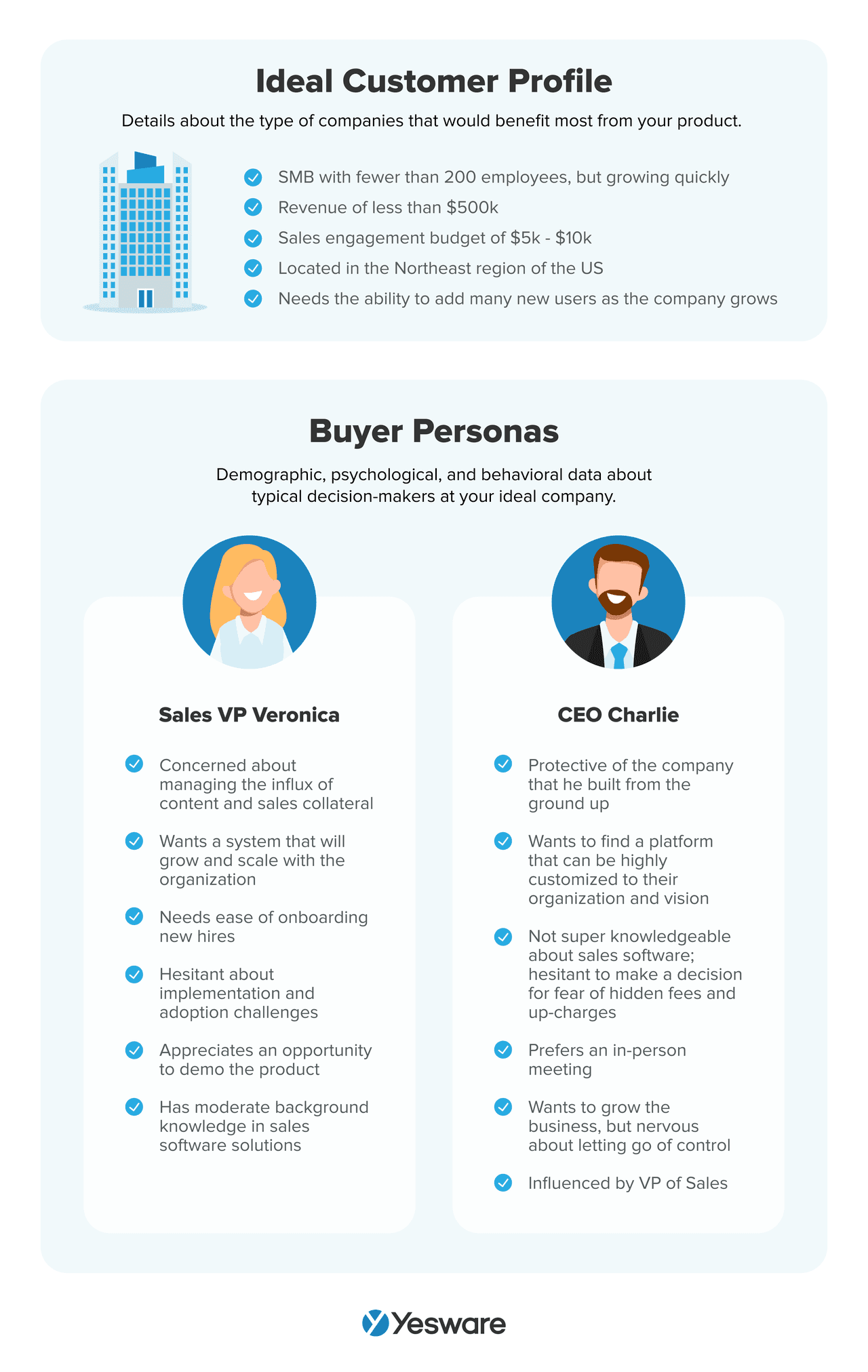
Example 1: Turning Shared Background into Trust
Sales Rep John is preparing for a meeting with CEO Charlie, who is known to be protective of his company’s brand and team. John does his homework ahead of time, reviewing Charlie’s LinkedIn profile and recent podcast interviews. He learns that Charlie started his company in the same city where John went to college—a detail that may seem small but can be powerful.
When they meet, John opens the sales conversation by mentioning his time in that city and how it shaped his early career. Charlie smiles, instantly more at ease. The conversation begins on common ground, which softens Charlie’s skepticism and opens the door to a more open, personal dialogue. John uses this rapport to shift naturally into understanding Charlie’s current challenges—without pushing a pitch too early.
Why it works: This interaction feels authentic. John uses personalization not to manipulate, but to connect. That connection builds trust, which leads to a more transparent conversation.
Example 2: Adapting on the Fly
John prepares a casual opener and plans to ease into the conversation with small talk before discussing business. But the moment the call begins, Charlie cuts to the chase: “We need to cut costs by Q4. Tell me why your solution is worth the investment.”
Rather than stumbling, John quickly pivots. “Totally fair, Charlie. I actually spoke with a client in a similar position just a few months ago. Let me share how they managed cost savings during their first quarter with us.” John reframes the conversation on the fly, skipping the small talk and speaking directly to Charlie’s urgency with relevant proof.
Why it works: John listens, adapts, and meets the prospect where they are. Relationship selling isn’t about sticking to a script—it’s about being present and responsive.
Example 3: Following Up with Purpose
After the initial meeting, John doesn’t just send a generic follow-up. He remembers that Charlie mentioned concerns about managing a newly remote team. A few days later, John sends over a short article on remote leadership best practices, along with a note: “Thought this might help as you work through some of the challenges we discussed—hope it’s useful!”
Charlie responds: “Really helpful—appreciate it!” The exchange builds momentum and positions John as someone who adds value beyond the product.
Why it works: This follow-up is timely, relevant, and clearly not automated. It reinforces that John is listening—and that he cares about the customer’s broader success.
Challenges in Relationship Selling
While relationship selling can lead to stronger client loyalty and long-term success, it also comes with its own set of challenges. Here’s how top-performing sales professionals navigate the most common obstacles.
Balancing Relationship Building with Sales Targets
Relationship selling requires time and emotional investment—two things that can feel at odds with the pressure to hit monthly sales quotas. The key is to align relationship-building activities with pipeline efficiency.

Practical strategies:
- Qualify early and often. Build relationships with prospects who are a strong fit for your solution and ICP. Quality over quantity matters more in a relationship-based approach.
- Block time for relational selling. Allocate specific time in your calendar for value-driven follow-ups, content sharing, and check-ins so they do not fall through the cracks under quota pressure.
- Use CRM smartly. Track not just deal stages, but relationship signals—like sentiment, last contact, and personal notes—so your relationship-building efforts contribute to pipeline visibility and forecasting.
Dealing with Long Sales Cycles
Long buying journeys are common in B2B sales, especially in industries like tech, finance, or healthcare. The challenge? Staying top-of-mind without becoming a nuisance.
Strategies to maintain engagement:
- Share helpful, low-pressure content. Articles, podcasts, and relevant news show you are thinking of the prospect and understand their world.
- Celebrate their wins. Promotions, press mentions, or new product launches are great opportunities to reach out authentically.
- Use milestones. Tie your outreach to timely business cycles (like planning season, budget resets, or industry events) to make follow-ups more natural and relevant.
Handling Relationship Setbacks
Even well-developed relationships can hit rough patches—whether due to a miscommunication, a delivery issue, or shifting prospect priorities.
Recovery tactics:
- Own mistakes early. Address issues directly and with transparency. A sincere apology often builds more trust than perfection.
- Refocus on shared goals. Remind the prospect of the larger outcome you’re working toward together and how you can still help them succeed.
- Ask for feedback. Use conflict as a learning opportunity. When prospects feel heard—even in frustration—they’re more likely to stay engaged.
Example: If a prospect feels like the rep dropped the ball on a promised resource, a fast reply like: “You’re right—this one’s on me. I appreciate your patience and I’ve prioritized getting this to you by end of day,” can re-establish trust and show accountability.
Proving ROI of Relationships
Relationship selling takes time—and that can make it harder to measure and defend compared to activity-based metrics like call volume or email cadence. Leadership may want to see hard numbers.
How to demonstrate value:
- Track multi-touch attribution. Log relationship-building touchpoints in your CRM and track how they contribute to deal velocity, conversion rates, and retention.
- Measure customer lifetime value (CLTV). Show how clients who experience stronger relationships tend to buy more, renew faster, and refer others.
- Highlight pipeline quality. Fewer but warmer leads can outperform high-volume cold outreach. Use win rates and deal size to back this up.
- Share stories. Anecdotes of relationship-based wins or referrals can be just as persuasive as data when presented in team reviews or leadership syncs.
Measuring Success: Key KPIs for Relationship Selling
In relationship selling, the ultimate success isn’t just about closing a single deal; it’s about cultivating enduring partnerships that yield consistent value over time. Therefore, measuring the effectiveness of your relationship-focused sales efforts requires looking beyond traditional transactional sales metrics.
These Key Performance Indicators (KPIs) provide a holistic view of the health and profitability of your customer relationships.
Customer Lifetime Value (CLTV)
Definition: CLTV is a prediction of the total revenue a customer will generate throughout their entire relationship with your company. It goes beyond the initial purchase to encompass all future transactions.

Why it matters: This is perhaps the most crucial long-term metric for relationship selling. A high CLTV directly validates the investment in building deep customer relationships, as loyal customers tend to purchase more frequently, spend more over time, and require less acquisition cost. It shifts the focus from short-term gains to sustainable growth.
Referral Rate
Definition: This KPI tracks the percentage of new business that is directly generated through referrals from your existing, satisfied customers.
Why it matters: High referral rates are a powerful testament to successful relationship selling. When customers trust you and are genuinely happy with your service, they become powerful advocates for your brand. Referred leads typically have shorter sales cycles, lower acquisition costs, and higher conversion rates because they come with built-in trust from a respected source.
Customer Retention Rate / Churn Rate
Definition:
- Customer Retention Rate: The percentage of customers a business retains over a given period.
- Churn Rate: The percentage of customers who stop doing business with you over a given period (the inverse of retention).

Why it matters: Strong customer relationships are the bedrock of retention. Lower churn and higher retention directly indicate that customers feel valued, supported, and are continuously deriving value from your solution. These metrics are direct reflections of your team’s success in nurturing relationships post-sale.
Customer Satisfaction (CSAT) / Net Promoter Score (NPS)
Definition:
- CSAT: Measures how satisfied customers are with a specific interaction or overall product/service, often via a direct survey question (e.g., “How satisfied are you on a scale of 1-5?”).
- NPS: Measures customer loyalty and willingness to recommend your company, typically on a 0-10 scale (“How likely are you to recommend us to a friend or colleague?”).
Why it matters: These metrics gauge the health of your customer relationships and the quality of their experience. High scores indicate that your sales and customer success teams are effectively meeting needs and building positive sentiment, which underpins long-term loyalty and reduces the risk of churn.
Repeat Purchase Rate
Definition: The percentage of customers who make more than one purchase from your business over a defined period.
Why it matters: For businesses with recurring revenue models or product lines suitable for repeat sales, this KPI directly reflects the strength of customer relationships. A high repeat purchase rate indicates customer satisfaction, ongoing need, and the effectiveness of relationship-building efforts in driving continued business.
Upsell/Cross-sell Rate from Existing Customers
Definition: The percentage of existing customers who purchase additional, higher-value products (upsell) or complementary products/services (cross-sell).
Why it matters: This metric demonstrates the depth of trust and understanding within customer relationships. When customers trust your recommendations and see you as a valuable partner, they are more open to expanding their investment with you. It signifies that your sales team is adept at identifying evolving customer needs and providing holistic solutions.
Engagement Metrics (Proactive Contact Frequency, Response Rates)
Definition: These are metrics that measure the level and quality of interaction a sales professional maintains with prospects and customers throughout and after the sales cycle. Examples include frequency of personalized check-in emails, attendance at customer-only webinars, or response rates to value-add content shared.
Why it matters: While not directly tied to revenue, these leading indicators reflect the ongoing health of the relationship. Consistent, valuable engagement ensures your brand stays top-of-mind, maintains rapport, and positions you as a trusted advisor, laying the groundwork for future opportunities and preventing relationship decay.
By diligently tracking and analyzing these relationship-focused KPIs, sales professionals can gain deep insights into the long-term impact of their relationship selling strategies, continuously optimize their approach, and build a more sustainable and profitable customer base.
How Technology Empowers Relationship Selling: High-Touch at Scale
In today’s fast-paced, data-rich sales environment, the idea of “high-touch” relationship selling might seem at odds with “high-tech” tools. However, the reality is that technology doesn’t diminish the human element; it profoundly enhances it.
Modern sales tools are precisely what allow relationship sellers to maintain genuine, personalized connections, even as their sales pipeline grows. They enable a powerful synergy where high-tech capabilities facilitate truly high-touch engagement at scale.
CRM Systems: The Foundation for Personalized Engagement
At the heart of modern relationship selling is a robust Customer Relationship Management (CRM) system. This is a dynamic database that provides a comprehensive, 360-degree view of every prospect and customer.

- Tracking Customer History and Preferences: A CRM meticulously records every interaction—emails, calls, meetings, support tickets, purchase history, and even social media engagements. This rich historical data allows sales professionals to pick up conversations exactly where they left off, remember nuanced details, and understand evolving preferences, making every subsequent interaction feel genuinely personalized.
- Centralized Communication: All communications are logged and accessible to relevant team members. This ensures seamless handoffs between sales, marketing, and customer success, guaranteeing that the customer always feels understood and that their journey is consistent, reinforcing trust and continuity.
- Long-Term Engagement: By consolidating all customer intelligence, CRMs empower sales teams to nurture relationships over extended periods, identifying critical milestones (e.g., contract renewals, project completion) and potential opportunities for continued value delivery.
Sales Engagement Platforms (SEPs): Personalized Communication, Amplified
Sales Engagement Platforms are specifically designed to empower relationship sellers to communicate effectively, efficiently, and personally, without being overwhelmed by volume.

- Personalized Communication at Scale: SEPs allow sales reps to create highly personalized email sequences and multi-channel cadences that can be deployed to many prospects simultaneously. Instead of generic blasts, these platforms enable dynamic fields, custom snippets, and conditional logic to ensure each message feels unique and relevant to the individual recipient, even in large outreach efforts.
- Managing Follow-Up Cadences: Relationship selling thrives on consistent follow-up, but manually managing hundreds of individual follow-up tasks is impossible. SEPs automate the scheduling and delivery of follow-up messages across email, phone, and social channels, ensuring no prospect falls through the cracks while maintaining a human-like cadence.
- Insights into Prospect Engagement: SEPs like Yesware provide critical analytics on how prospects interact with your communications. You can track email opens, link clicks, attachment views, and even reply rates. These insights are invaluable for relationship sellers, as they signal prospect interest and intent, allowing reps to prioritize their efforts, tailor their next touchpoint, and respond in a timely, highly relevant manner. Knowing when a prospect is engaged allows for the perfect moment to interject with a personalized, high-touch interaction.
![]()
Conversation Intelligence and AI: Deepening Understanding and Skills
Artificial intelligence and conversation intelligence platforms are revolutionizing how sales teams listen, learn, and coach, directly impacting the quality of relationship selling.
- Analyzing Sales Conversations: These AI-powered tools record, transcribe, and analyze mock calls, sales calls, and meetings. They can identify key topics discussed, sentiment, talk-to-listen ratios, and instances of objection handling or successful value propositions.
- Understanding Customer Needs at Scale: By analyzing patterns across many conversations, AI can uncover overarching customer needs, common pain points, and even unspoken objections that might be missed in individual interactions. This aggregated insight helps sales teams understand their market more deeply.
- Coaching Reps on Relationship-Building Skills: AI coaches can provide personalized feedback to sales reps based on their recorded conversations. They can highlight opportunities for more active listening, suggest alternative phrasing for difficult conversations, or point out moments where rapport was successfully built (or lost). This objective, data-driven coaching accelerates skill development in crucial areas like empathy, questioning, and trust-building.
Automation: Freeing Up Time for High-Value Interactions
Perhaps one of the most underrated benefits of sales technology in relationship selling is its ability to automate mundane, repetitive administrative tasks.
- Reduced Administrative Burden: Automating tasks like CRM data entry, meeting scheduling, lead routing, and routine follow-up reminders frees up significant time for sales professionals.

- Focus on High-Value Human Interaction: With less time spent on manual processes, reps can dedicate more energy to what truly matters in relationship selling: deep discovery calls, personalized problem-solving, strategic account planning, and fostering genuine human connections. Technology handles the “low-touch” tasks, enabling sales reps to excel at the “high-touch” interactions that build lasting relationships.
In conclusion, far from making relationship selling obsolete, technology has become its most powerful ally. By integrating CRM, SEPs like Yesware, conversation intelligence, and intelligent automation, sales professionals can scale their personalized efforts, gain unprecedented insights, and cultivate stronger, more profitable customer relationships than ever before.
Conclusion
Relationship selling is a fundamental shift in philosophy, recognizing that long-term success is rooted in genuine trust, deep understanding, and consistent value delivery. In an increasingly competitive landscape, the ability to build and nurture these invaluable connections is what truly differentiates top-performing sales professionals and sustainable businesses. By focusing on mutual benefit, empathy, and a commitment to the customer’s journey, sales teams can unlock unprecedented levels of loyalty, referrals, and sustained revenue growth.
And in this high-touch approach, technology is not a replacement for human connection, but its most powerful enabler. A sophisticated Sales Engagement Platform (SEP) like Yesware is precisely designed to empower sales reps to excel at relationship selling, allowing them to scale their personalized efforts without sacrificing authenticity.
Yesware empowers your relationship selling by:
- Enabling Consistent, Value-Driven Follow-Ups: Manage multi-channel cadences with ease, ensuring you stay top-of-mind and continue to provide value over the long sales cycle, without being pushy or losing track of conversations.
- Providing Actionable Insights: Understand how your prospects engage with your communications (opens, clicks, replies). This intelligence allows you to perfectly time your personalized interventions, ensuring your high-touch efforts are always impactful and well-received.
- Freeing Up Time for Deeper Connections: By automating routine tasks, Yesware gives sales reps more precious time back to focus on the truly human aspects of relationship selling—deep discovery calls, strategic planning, and face-to-face (or screen-to-screen) interactions that build unbreakable trust.
Ready to transform your sales approach from transactional to relational and secure a future of loyal customers and consistent growth? Sign up to use Yesware and experience the difference of high-touch selling, at scale.
Frequently Asked Questions About Relationship Selling
Q1: What is relationship selling, and how is it different from traditional sales?
Relationship selling is a sales approach focused on building a deep, trusting, and mutually beneficial relationship with the buyer over time, prioritizing the customer’s long-term success. It differs from traditional or “transactional” sales, which typically focus on closing an immediate, one-time deal, often for lower-value products or shorter sales cycles. Relationship selling thrives in complex, high-value, and long sales cycle environments, emphasizing ongoing rapport and value delivery.
Q2: Why is relationship selling important in today’s market?
In today’s highly competitive and uncertain market, customers have more choices and access to information than ever before. They seek partners, not just vendors. Relationship selling builds the trust and loyalty necessary for repeat business, referrals, and long-term customer lifetime value. It creates a competitive advantage by fostering genuine connections that are harder for competitors to replicate based solely on price or features.
Q3: What are the key stages in the relationship selling process?
While variations exist, relationship selling typically unfolds in stages such as:
- Discovery & Understanding: Deeply researching and listening to grasp the prospect’s needs, challenges, and goals.
- Building Rapport & Trust: Establishing a genuine connection, credibility, and empathy.
- Value Alignment & Solutioning: Tailoring and presenting solutions that directly address their specific problems.
- Commitment & Close: Guiding the prospect to a decision through collaborative dialogue.
- Post-Sale Nurturing & Expansion: Providing ongoing support, ensuring success, and identifying opportunities for continued partnership (upsells, cross-sells, referrals).
Q4: How does technology support relationship selling?
Technology, far from replacing human connection, enhances it.
- CRM systems centralize customer data, enabling personalized interactions and historical context.
- Sales Engagement Platforms (SEPs) like Yesware allow for personalized communication and consistent follow-ups at scale, while providing insights into engagement.
- Conversation Intelligence/AI tools analyze interactions to improve listening skills and understanding of customer needs.
- Automation handles repetitive tasks, freeing sales reps to focus on high-value, high-touch relationship-building activities.
Q5: What are the main benefits of adopting a relationship selling approach?
The benefits of relationship selling are significant and long-lasting:
- Increased Customer Loyalty & Retention: Customers are more likely to stay with a trusted partner.
- Higher Customer Lifetime Value (CLTV): Loyal customers spend more over time.
- More Referrals: Satisfied customers become advocates for your business.
- Enhanced Upsell & Cross-sell Opportunities: Trust opens doors to expanding business.
- Improved Sales Efficiency: Referrals and repeat business reduce customer acquisition costs.
- Stronger Brand Reputation: A reputation built on trust and customer success.
Q6: Can relationship selling be used in all industries?
While particularly effective in B2B, high-value B2C, or complex sales environments with longer sales cycles (e.g., software, financial services, real estate, consulting), the principles of relationship building (trust, understanding, value) are beneficial in virtually any industry. Even in more transactional settings, a focus on customer service and rapport can foster loyalty and differentiation.
This article was updated on June 16th, 2025, to include the latest information and insights.
Get sales tips and strategies delivered straight to your inbox.
Yesware will help you generate more sales right from your inbox. Try our Outlook add-on or Gmail Chrome extension for free, forever!
Related Articles
Casey O'Connor
Casey O'Connor
Casey O'Connor
Sales, deal management, and communication tips for your inbox

